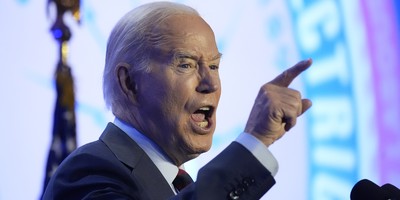Sifting through the Administration-Solyndra emails it is clear that President Obama’s taxpayer investment in Solyndra was not random. Bureaucrats and political appointees spent significant time evaluating the company and debating the merits of the soon-to-be-wasted taxpayer guarantee. And that is exactly the problem!
Thanks to the diligence of various House committees, we now have an inside look at the decision-making process and ongoing conversations related to the Solyndra loan guarantee. Much of the reporting has focused on the political motivations behind the boondoggle, but the real focus should be on the email threads that are more suited for a private corporation than the Executive Branch of the United States.
Vice President Joe Biden’s then-chief of staff Ronald Klain emailed, “Putting my oId private equity hat on, I would say that these guys [Solyndra] are no different than a lot of stage two companies: they are burning capital, perhaps a bit fast, and are dependent on a break or two to be viable outside of the 18 - 24 month window.”
Mr. Klain’s analysis may be fine in the private equity world – you take calculated risks with private money expressly for that purpose. But in government, that is not the case. Americans do not work so their government can take risks, calculated or otherwise, with their tax dollars and discuss burn rates and business development stages.
Another email took a deep dive into Solyndra’s economics: “While debt coverage is robust under stress conditions, the project cash balance goes to $62,000.00 in September 2011.” The email went on to discuss “working capital,” a “funding shortfall” and a “negative cash balance.”
Recommended
Taken in isolation, you would be tempted to think the email was from an investment advisor. Of course, any investment advisor worth his salt would warn you to stay far away from a company is such a downward spiral.
Matt Rogers, a senior advisor to Energy Secretary Steven Chu, seemed to understand the dire warnings. About the future of the Solyndra, he emailed, it “needs more capital to keep going long-term, which is why they are planning to tap the public markets.”
In email after email, we can find the same thing, bureaucrats and political appointees “putting on hats” and analyzing a private company’s economic viability to determine if they should invest taxpayer money into that company.
This is not the government our founders intended, nor the one we learned in civics class. Rather, this governing style is more suited for a bad Hollywood movie depicting incompetent crony capitalism in a country on the decline.
Ironically, the absurdity of the entire “green jobs” investment scheme was pointed out in an email to Larry Summers, who was the director of the National Economic Council. The snippet is a bit long, but instructive:
The allocation of spending to clean energy is haphazard; the government is just not well equipped to decide which companies should get the money and how much. That is, after all, what my industry does, and there are lots of mechanisms in place to see that it is done right. One of our solar companies with revenues of less than $100 million (and not yet profitable) received a government loan of $580 million; while that is good for us, I can't imagine it's a good way for the governement (SIC) to use taxpayer money (I'd prefer my opinion about that specific company be between us). Every administration seems to feel like it knows better than the private markets how to allocate capital, and I've just never seen that be true.
That email was from Brad Jones, the founding partner of Redpoint Ventures, and the company he referenced was Solyndra. Amusingly, in subsequent emails, Mr. Summers appeared to agree with him, emailing, “I relate well to your view that gov is a crappy vc [venture capitalist] and if u were closer to it you'd feel more strongly."
Another blacked out email warned that the Energy Department’s “‘system’ for monitoring loans is quite problematic…and does not seem to be a program priority.” So, not only were bureaucrats and political appointees acting like investors with our money, they knew they were doing a “crappy” job of it all.
Americans understand that Solyndra is just the most tangible symptom of a much deeper problem. The Washington Establishment’s faith in the power and expertise of government knows no limits. When given nearly unchecked power and money, bureaucrats and political appointees will use taxpayer money however they please, even if they recognize they do it poorly.
Right now, it is Solyndra. But until we get our government out of the daily ins-and-outs of the private sector, we can expect similar boondoggles.

























Join the conversation as a VIP Member